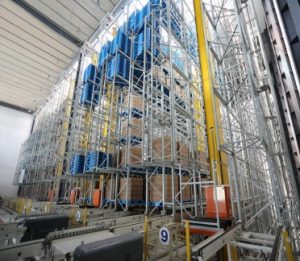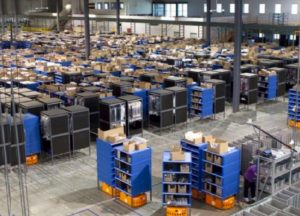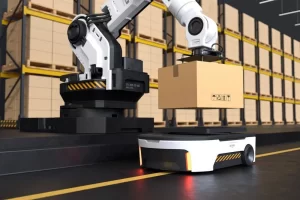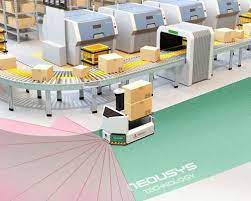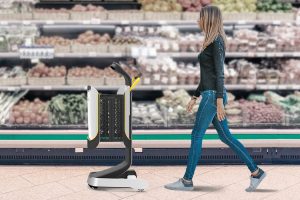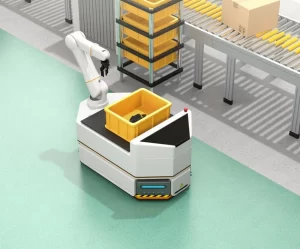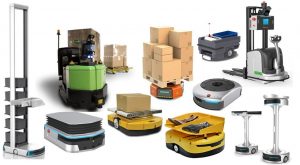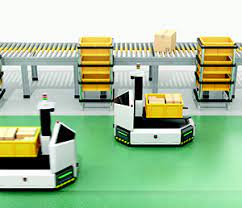OUR BUSINESS IN AI (INTELLIGENCY)
Adding Value. Making a Difference.
Ejireh has designed and implemented automated material handling systems and improved processes for clients throughout APJ. The systems we design and bring to life help our clients efficiently store, retrieve, pack, and ship goods safely to their customers around the globe. These systems reduce operational costs in the supply chain and help our clients enhance their profitability. The ultimate reward is helping our clients to enrich their own brand’s equity by providing them with benchmark setting performance levels and the ability to provide a superior customer experience.
Ejireh has developed strong long-lasting relationships with hundreds of vendor partners across the industry and world. We can help assure our clients with the best solution for their exact business and operations requirements. Each step helps lay the foundation and build the foundation for determining the correct amount of automation, labor requirements, floor space and future requirements.
We create systems and solutions for distribution centers, warehouses, and manufacturing facilities in a broad range of industries. As a full-service integrator, our overall goal is to create systems that maximize productivity while reducing operational costs. Success is achieved through a customer centered approach where the Ejireh team ensures our designs will not only address our client’s current needs but offer future flexibility as their needs change over time. Our systems assist clients with achieving leaner operations while improving their competitive position in their industry.
AMR SOLUTIONS
An autonomous mobile robot (AMR) is any robot that can understand and move through its environment without being overseen directly by an operator. Typically, this is achieved through an array of sophisticated on-board sensors, computers, and maps, which allow AMRs to understand and interpret their environment in order to function as a form of asynchronous transportation.
- Autonomous Mobile Robots (AMRs)
- AMR Proof of Concept
- Goods-to-Person Autonomous Mobile Robots (AMR) and ASRS
- Stacker-Bot AMR-ASRS
- TiltSort-Bot Sortation Putwall AMR
AGV Solutions
Automated Guided Vehicles (AGVs) are commonly thought of as simple machines that perform simple tasks in lieu of personnel. And while this is true in some regards, the last decade has seen AGVs become integrated into many industries outside of distribution and manufacturing—such as retail, the military, and even healthcare.
With this growing boom in the use of AGVs, the logical question that comes to mind for many business owners and operations managers is this: As I look to automate my warehouse or DC, how do I determine whether AGVs are a good fit for my industry and for my operations? What are the pros and cons of AGVs that I can weigh to decide whether to use them?
Advantages of AGVs
-
Reduced Labor Costs
AGVs reduce labor costs in your operation in many ways: By replacing a human worker with an AGV, a company pays a single expense for the equipment—the initial investment—versus ongoing costs that would come with a new hire such as healthcare coverage, payroll taxes, salary increases, vacation time, etc.
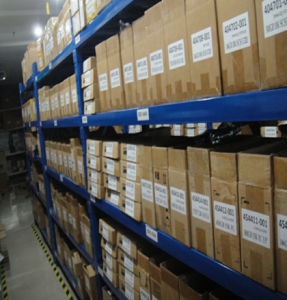
-
Increased Safety
AGVs are programmed with safety in mind, and as such are crammed full of cameras, lasers, and other sensors that allow them to safely operate around personnel and structures. By contrast, equipment run by human operators, such as forklifts, do not have as many built-in safety mechanisms and ultimately rely on human input, which can be compromised in any number of ways. Whereas a human operator always has the potential to become distracted or fatigued, and therefore cause an accident, these are not concerns when using AGVs.
Additionally, AGVs can operate in conditions that humans either aren’t able to operate in or in conditions that humans don’t operate optimally in, such as in extreme heat or cold or around hazardous materials.
All of this increased safety leads to reduced cost and reduced operational downtime, which can ultimately increase the profitability of many operations.

-
Increased Accuracy and Productivity
Simply put: Humans make mistakes. By replacing the human element with AGVs, you remove some of the potential for inaccurate workflows, ultimately reducing waste and increasing output, allowing your operations to become more productive and accurate. And whereas human personnel is limited in how long they can work, AGVs are capable of running 24/7.
In addition to the obvious improvements in accuracy and productivity, by integrating AGVs with a warehouse control system or a warehouse management system, you can streamline processes such as inventory and materials ordering.
-
Modularity
As your operations expand, it is easy to add additional AGVs as necessary (this is sometimes called a “modular system element”). This allows you to avoid an incredibly high initial investment because instead of purchasing 20 or 30 AGVs at once, you are able to start with one or two and transition slowly, eventually expanding your fleet to a fully-automated or mostly-automated operation.
Disadvantages of AGVs
-
Potentially High Initial Investment
Ultimately, AGVs increase the bottom line for an operation by reducing labor costs and by increasing productivity, but it comes at a cost: the initial investment. Purchasing an AGV, in the short term, is likely going to be more expensive than hiring personnel or using other equipment such as forklifts. It is usually in the long term that savings are fully realized. This initial investment can be burdensome on smaller operations that may not have ready access to capital.
Maintenance Costs. As with any equipment, AGVs will need to undergo routine maintenance and occasional repair. And though AGVs will not be operated directly by staff, there is bound to be some operational downtime as the staff is trained and AGVs are implemented. This isn’t necessarily a “disadvantage” per se, but the potential for an occasional ongoing expense should be taken into account.
-
Maintenance Costs
As with any equipment, AGVs will need to undergo routine maintenance and occasional repair. And though AGVs will not be operated directly by staff, there is bound to be some operational downtime as the staff is trained and AGVs are implemented. This isn’t necessarily a “disadvantage” per se, but the potential for an occasional ongoing expense should be taken into account.
-
Not Suitable for Non-repetitive Tasks
AGVs make the most sense in operations that deal with repetitive tasks since that is what they are programmed to do. If the tasks in your operations tend not to be repetitive, then they can probably be done more quickly and efficiently by staff operating other equipment (such as a forklift).
-
Decreased Flexibility of Operations
One of the benefits of having human personnel is that sometimes operations require flexibility, such as the ability to jump between tasks.
For example, maybe you need Steve to stop doing what he’s doing and cover for Joe, who has a family emergency and needs to leave, and who was doing something completely different. As long as Steve has the correct supervision and relevant experience, this isn’t a problem—he can fill in where needed, whereas an AGV may not be able to.
AGVs work according to preset systems and processes, which can make rapid change difficult. A business model that tends to react to trends or that is otherwise agile may not be the best fit for AGVs.
Alternatives to AGVs
The benefits that AGVs offer have created buzz and placed them front and center in the minds of warehouse managers and supply chain executives who are considering automation. But the simple truth is that they are not well-suited for all businesses.
If you are looking to automate your operation but worry that AGVs would not fulfill your specific needs, there’s good news: Warehouse automation comes in many forms and technologies that you can use to boost the efficiency and profitability of your operation.
Below, we explore some of the alternatives to AGVs that may be able to help you reach your operational goals.
Ejireh Systems vs. AGVs
Ejireh systems were created to automate the transfer of materials—whether raw materials, works-in-process, or finished goods—from one location to another within a factory, warehouse, or distribution center, just as AGVs are designed to do.
Because Ejirehs have been around for so long, the underlying technology that makes them work has been adapted into countless variations, each of which is well-suited to transporting different kinds of materials and completing different tasks (such as sorting) in addition to simply transporting materials. Some of the most common Ejirehs available include:
- Accumulation Ejirehs
- Case Ejirehs
- Pallet Handling Ejirehs
- Trash Ejirehs
- Polybag Handling Systems
- Numerous sortation systems
Our Customer



